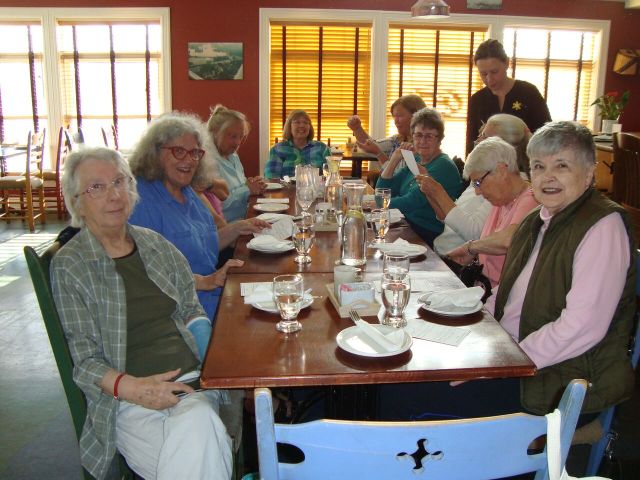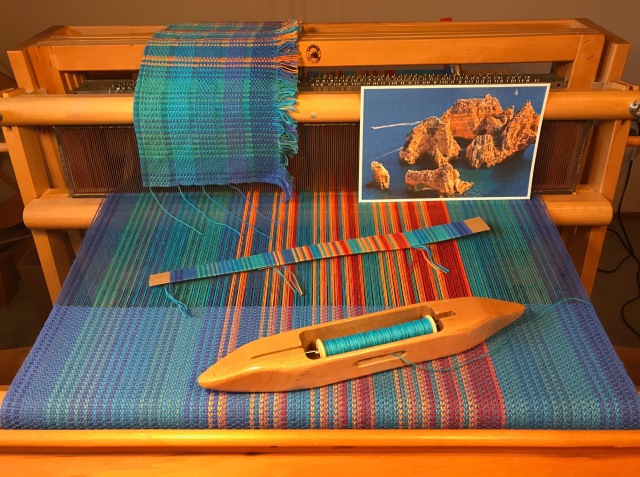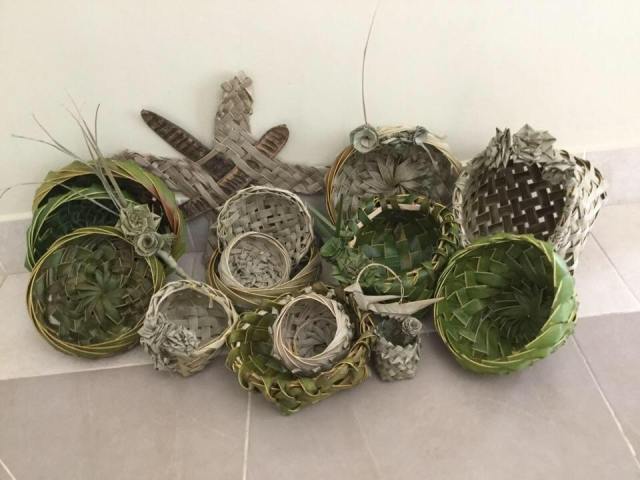Each year a group of guild members make the journey to Stowe, Vermont to take part in the Basketry Festival. This year only three members made the trip. Here is Jill’s experience of her week in the mountains.
Tidal Wave Basket (Instructor: Debbie Hurd – Garfield, AR )
This basket was woven over a class mold to achieve a perfect shape! It is made of cane. We learned several techniques including 4-rod wale, 6-rod wale, twill weaving, triple twining, triple twine arrows, packing rows and a folded rim. There were lots of colour choices.
Abalone and Cedar Basket (Instructor: Pam Talsky – Waterford, WI) –
In creating this basket, we were taught traditional Haida weave techniques using finely, hand prepared Alaskan yellow and red cedar from Thorne Bay, AK. Beautiful large Abalone specimens are included. We learned square to round start, adding warp (spokes) and a sweet border at the top. Beads were used to add an extra sparkle. Waxed linen twining experience is a great base to learn from. Harvest and preparation were discussed. Pam harvests and treats her own yellow cedar.
Hinges, Doors, Books and Lockets (Instructor: Mary Hettmansperger – Peru, IN)
This was definitely not a basket class but as the guild challenge this year is Get Wired, it was a very approprite class choice. Using copper sheeting and silver accent, we designed a hinged locket. Mica was used to protect the image she brought for the locket and cold connections held it in place. We made one locket with a copper back and a sterling front and other materials were available to make more books and lockets using just copper. Patinas, texturing and metal applications, including embossing, were also explored. The focus of this class was to master the hinge using tabs to create a variety of moveable doors. It is a low-tech process with fabulous results.
Wrapped Up (Instructor: Annetta Kraayeveld – Beloit, WI)
Unfortunately Jill did not finish her basket but the photo below shows us what her  finished basket will be like. It is a little market style basket. It starts with a woven filled base and is woven with round reed, hamburg cane and seagrass. We were also taught a great method for hiding weaver ends. The focal point of the basket it the eye catching wrap – one more great technique!
finished basket will be like. It is a little market style basket. It starts with a woven filled base and is woven with round reed, hamburg cane and seagrass. We were also taught a great method for hiding weaver ends. The focal point of the basket it the eye catching wrap – one more great technique!
Sculptural Antler Basket (Instructor – Anne Bowers – Kearneysville, WV.)
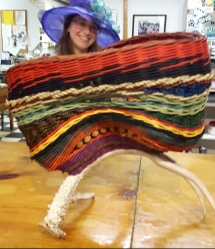
Jill did not take this course but could not resist showing it off. It was woven by the daughter of the festival’s organizer, Merry. This crazy colour basket was made using 10 different colors of round reed in addition to seagrasses, jute, baling twine and other materials. Techniques include how to weave in hills and valleys and how to make use of windows and beads. It sits on a antler. The baskets made in this class were all amazing!













































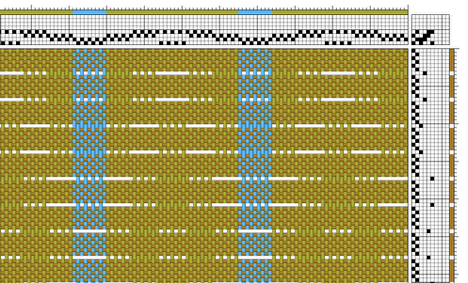






























 finished basket will be like. It is a little market style basket. It starts with a woven filled base and is woven with round reed, hamburg cane and seagrass. We were also taught a great method for hiding weaver ends. The focal point of the basket it the eye catching wrap – one more great technique!
finished basket will be like. It is a little market style basket. It starts with a woven filled base and is woven with round reed, hamburg cane and seagrass. We were also taught a great method for hiding weaver ends. The focal point of the basket it the eye catching wrap – one more great technique!










